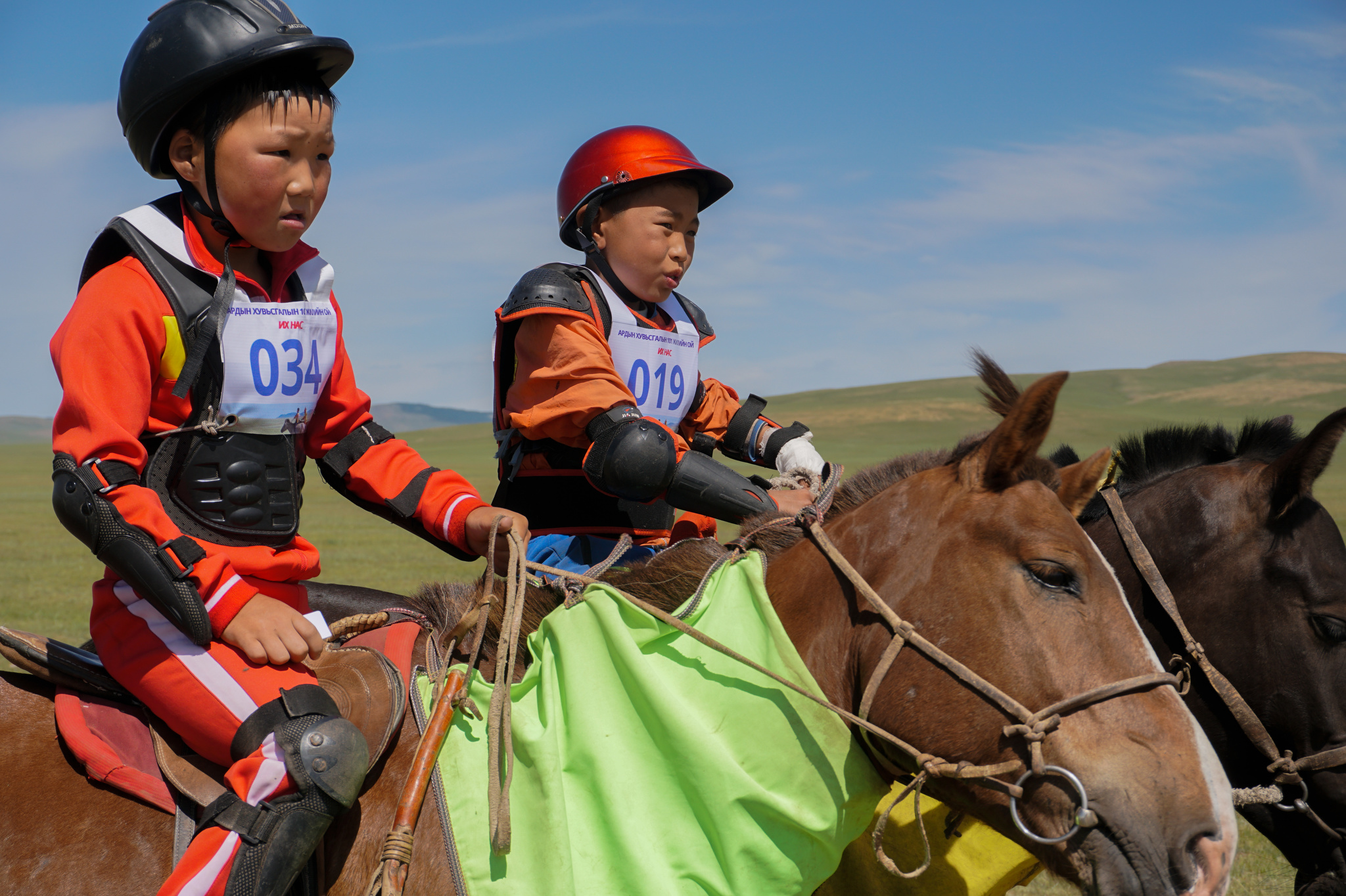Have you ever wondered about the connection between horseback riding and horse racing? It’s a fascinating topic with a lot to unpack. In horseback riding, you have the opportunity to engage with these beautiful animals up close and personal, forming a unique bond with them. But how does that relate to horse racing, where these magnificent creatures compete at top speeds? In this article, we’ll delve into the relationship between horseback riding and horse racing, exploring the similarities and differences between the two. By the end, you’ll have a deeper appreciation for both the sport and the art of riding.
When it comes to horseback riding, it’s all about the connection between horse and rider. In this activity, you have the chance to form a strong bond with your horse as you navigate through trails, engage in various disciplines, or simply enjoy a pleasurable ride. Horseback riding teaches you patience, balance, and trust as you communicate with your equine companion. On the other hand, horse racing is a thrilling sport where speed, strategy, and skill come into play. It showcases the incredible athleticism of both the horse and jockey, as they race against other competitors towards the finish line.
In this article, we’ll explore the history of horseback riding and horse racing, the different techniques and styles involved, as well as the common equipment used. We’ll also discuss how horseback riding can be a stepping stone for those interested in pursuing a career in horse racing. So, get ready to dive into the captivating world of horseback riding and horse racing, and discover the fascinating connection between the two. Stay tuned for an in-depth exploration of this topic in our upcoming blog posts!
The History of Horseback Riding
Horseback riding has a rich history that dates back thousands of years. From its origins as a means of transportation to its significance in different cultures, horseback riding has evolved into a beloved sport and recreational activity.
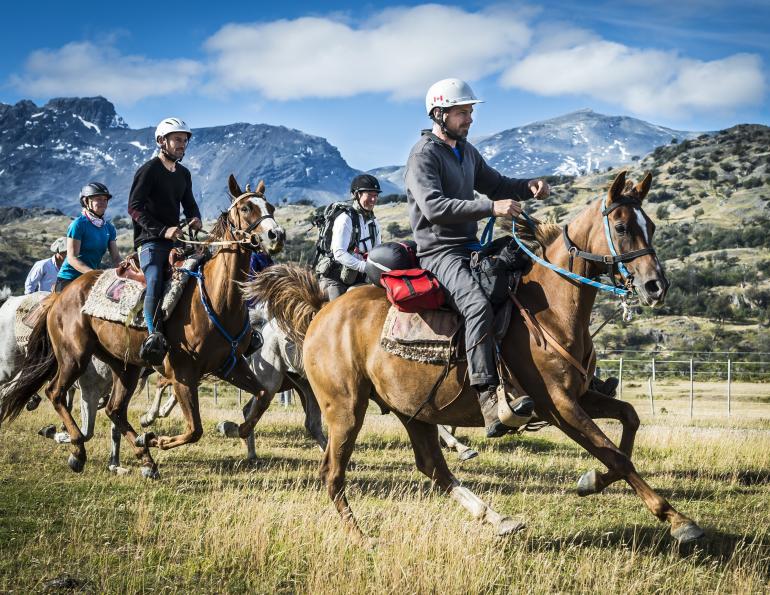
The origins of horseback riding
The exact origins of horseback riding are difficult to pinpoint, but evidence suggests that humans began riding horses as early as 4000 BCE in Central Asia. The domestication of horses revolutionized transportation and warfare, allowing humans to travel faster and conquer vast lands.
Early uses of horseback riding
In ancient civilizations such as Mesopotamia, Egypt, and China, horseback riding played a crucial role in military campaigns. Skilled riders mounted on horseback provided a competitive advantage on the battlefield, enabling swift maneuvers and effective attacks. Horses were also used for transportation, agriculture, hunting, and communication between distant regions.
Horseback riding in different cultures
Throughout history, horseback riding has been integral to the cultural identity of various civilizations. In Europe, knights and cavalrymen played a crucial role in medieval warfare, with their impressive horsemanship becoming legendary. In the Americas, Native American tribes relied on horses for hunting, transportation, and trade. Even today, horseback riding remains a central aspect of many cultures, including the traditional equestrian practices of the Mongols, Arabs, and the Gauchos of South America.
The Benefits of Horseback Riding
Aside from its historical significance, horseback riding offers numerous physical, mental, and emotional benefits. Whether you engage in it as a hobby or a therapeutic activity, horseback riding can positively impact your overall well-being.
Physical health benefits of horseback riding
Horseback riding is a great way to stay active and improve your physical fitness. It engages various muscle groups, including your core, legs, and upper body, as you maintain balance and control while riding. Regular horseback riding can enhance your coordination, flexibility, and posture. It is also an excellent cardiovascular exercise that helps build endurance and strengthen your heart.
Mental and emotional benefits of horseback riding
Connecting with horses and spending time in nature can have a profound impact on your mental and emotional well-being. The rhythmic motion of riding can be calming and therapeutic, reducing stress and anxiety. Interacting with horses promotes mindfulness and presence, allowing you to focus on the present moment. Additionally, the bond formed between rider and horse can boost self-confidence, improve communication skills, and provide a sense of fulfillment and companionship.
Therapeutic uses of horseback riding
Horseback riding has been recognized as a valuable therapeutic tool for individuals with physical, cognitive, and emotional disabilities. Equine-assisted therapy, also known as therapeutic riding, utilizes the movements and interactions with horses to improve balance, coordination, and muscle tone. It has been particularly effective in helping individuals with conditions such as autism, cerebral palsy, multiple sclerosis, and post-traumatic stress disorder.
Different Styles of Horseback Riding
Horseback riding encompasses a variety of styles and disciplines, each with its own unique techniques and purposes. Whether you prefer the elegance of English riding or the ruggedness of Western riding, there is a style to suit every rider’s preference.
English riding
Originating from European traditions, English riding focuses on grace, finesse, and precision. It is characterized by the use of a lightweight saddle and direct rein contact. English riding includes disciplines such as dressage, show jumping, eventing, and hunter/jumper competitions.
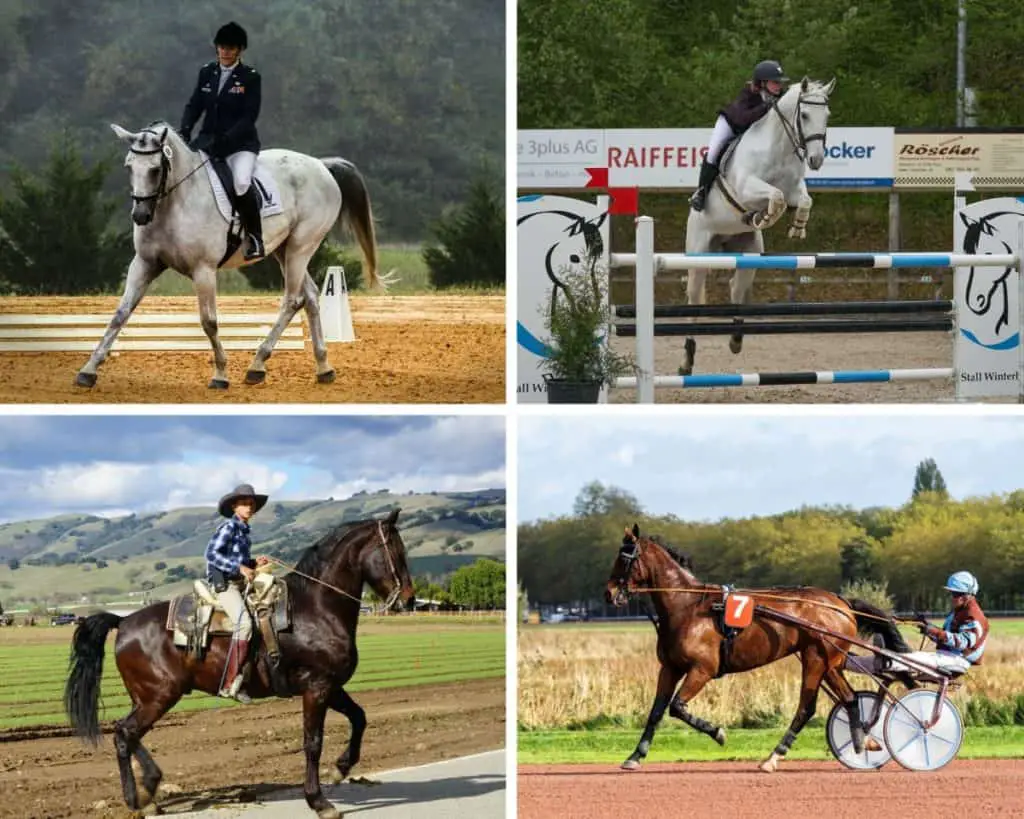
Western riding
Born out of the American cowboy culture, Western riding emphasizes comfort, practicality, and working with cattle. Western saddles are larger and deeper, providing more stability and support. Western riding encompasses activities such as barrel racing, roping, trail riding, and reining.
Dressage
Dressage is a highly disciplined form of horseback riding that showcases the harmony between horse and rider. It emphasizes precise movements, collection, and flexibility. Dressage competitions consist of a series of predetermined movements performed in an arena.
Trail riding
For those who enjoy exploring nature on horseback, trail riding offers a relaxing and scenic experience. It involves riding on designated trails, often in forests, mountains, or beaches. Trail riding allows riders to appreciate the beauty of nature while enjoying the companionship of their horse.
Jumping
Jumping is an exhilarating and competitive discipline in which riders guide their horses over a series of obstacles. Show jumping involves clearing fences in an arena, while cross-country jumping takes place over natural terrain. Jumping requires agility, accuracy, and a strong partnership between rider and horse.
Equipment and Gear for Horseback Riding
To ensure a safe and comfortable riding experience, it is essential to use the appropriate equipment and gear. From saddles and bridles to safety gear and attire, each piece plays a vital role in rider safety and horse welfare.
Bridles and reins
Bridles and reins are used to control the movement and direction of the horse. They consist of a headstall, bit, and reins. The headstall is made of leather or synthetic material and holds the bit in place. Different bits offer varying levels of control and pressure. Reins are attached to the bit and provide the rider with communication and control over the horse’s movements.
Saddles and saddle pads
Saddles are designed to distribute the rider’s weight evenly across the horse’s back, ensuring comfort and stability. They come in various styles, including English, Western, and Australian. Saddle pads are placed beneath the saddle to provide cushioning and protect the horse’s back from pressure points.
Safety gear for horseback riding
Safety should always be a top priority when riding a horse. Essential safety gear includes a properly fitted helmet to protect your head in case of a fall or impact. Riding boots with a heel are crucial for maintaining a secure foot position in the stirrups. In certain disciplines, such as jumping, wearing a protective vest can provide additional safety.
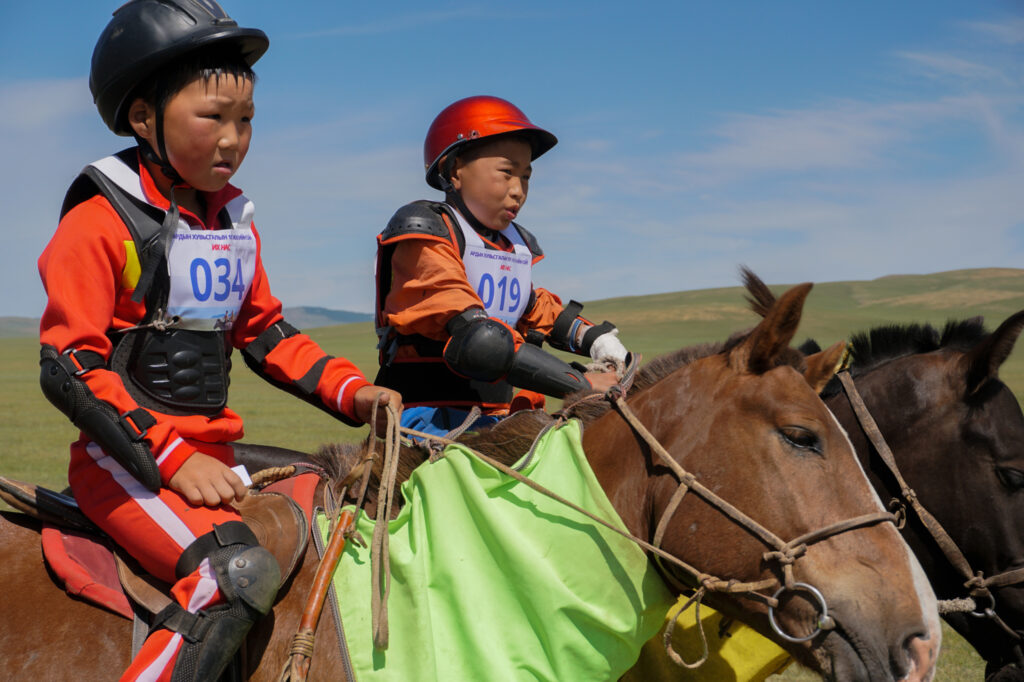
Proper attire for horseback riding
Wearing appropriate attire is not just about fashion; it also ensures comfort, freedom of movement, and protection. Riders should wear long pants, such as breeches or jeans, to protect their legs while riding. A fitted shirt or riding jacket, along with gloves, can enhance grip and prevent rubbing. Additionally, it is important to wear riding boots or shoes with a smooth sole and a heel to prevent the foot from slipping through the stirrup.
Horse Care and Maintenance
Caring for horses goes hand in hand with horseback riding. Proper care and maintenance are crucial for horses’ health, well-being, and performance. From feeding and grooming to hoof care and stable management, responsible horse ownership involves a range of responsibilities.
Feeding and nutrition for horses
Horses have specific dietary requirements to support their growth, energy levels, and overall health. Their diet primarily consists of forages such as hay and pasture grass. Additionally, horses require a balanced mix of grains, vitamins, and minerals. Feeding schedules should be consistent, providing small meals throughout the day to promote digestion.
Grooming and bathing horses
Regular grooming is essential for maintaining a horse’s coat, skin, and overall cleanliness. Grooming includes brushing the coat to remove dirt and debris, cleaning the hooves, and detangling the mane and tail. Bathing is recommended periodically to keep the horse’s skin and coat healthy. It also provides an opportunity to thoroughly inspect the horse for any signs of injury or illness.
Hoof care and farrier visits
Proper hoof care is vital to a horse’s well-being. Regular hoof trimming or shoeing ensures the hooves remain in good condition and prevents issues such as lameness or hoof imbalances. A qualified farrier should be consulted and scheduled for routine visits to maintain the horse’s hoof health.
Stable management
For horses kept in stables or barns, proper stable management is necessary to provide a safe and comfortable environment. Stables should be kept clean and well-ventilated, with ample space for the horse to move around. Regular stall cleaning, removal of manure, and providing fresh bedding are crucial for maintaining hygiene and preventing health issues.
Training and Techniques for Horseback Riding
To become a skilled rider and develop a strong bond with your horse, training and practice are essential. Whether you are a beginner or an experienced rider, focusing on technique and implementing effective training exercises can enhance your riding abilities.
Developing a bond with the horse
Building a strong bond and trust with your horse lays the foundation for a successful partnership. Spend time engaging in activities such as grooming, groundwork, and hand feeding to establish a connection. Understanding your horse’s body language and cues will help you communicate effectively and form a harmonious relationship.
Basic riding techniques
For beginners, learning the fundamental riding techniques is crucial. This includes proper posture, balance, and the correct use of aids (leg, seat, and rein). Mastering these basics allows for clear communication and control over the horse’s movements.
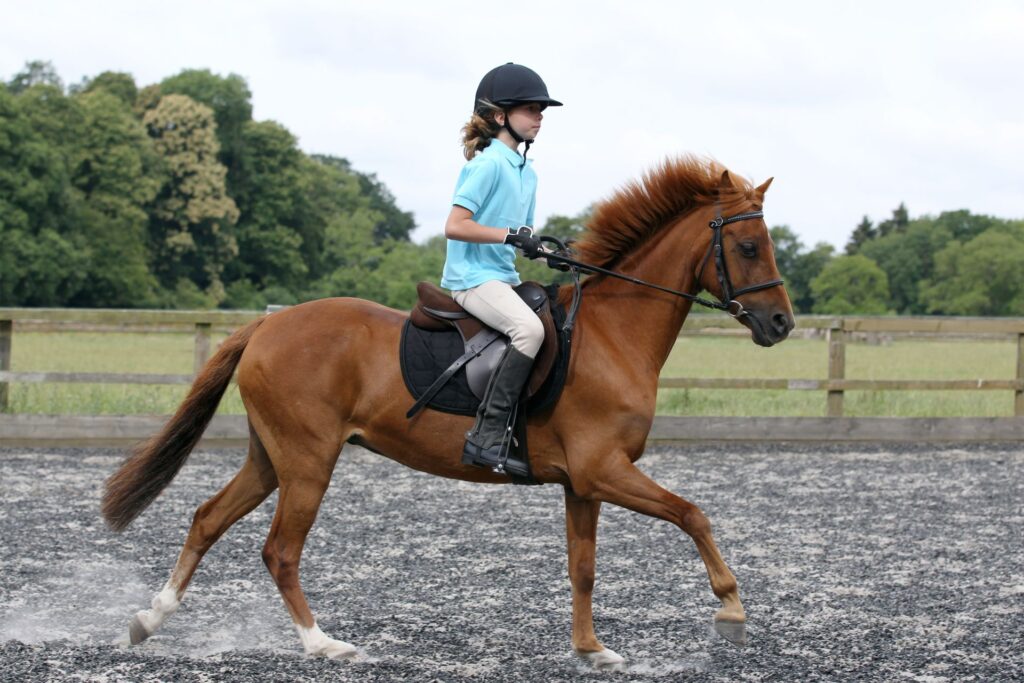
Advanced riding techniques
As riders progress, they can explore more advanced techniques relevant to their chosen discipline. This may involve fine-tuning their position, refining their aids, and practicing complex movements specific to their chosen discipline, such as collection in dressage or jumping larger obstacles. Continuous practice, under the guidance of an experienced instructor, can help riders refine their skills and achieve higher levels of performance.
Training exercises for horses
Training exercises play a vital role in developing a horse’s strength, flexibility, and obedience. They can vary depending on the horse’s level of training and discipline. Exercises may include transitions between gaits, serpentines, circles, lateral movements, and jumping grids. Consistency, repetition, and positive reinforcement are key when implementing training exercises.
Safety Tips for Horseback Riding
While horseback riding can be an enjoyable experience, it is essential to prioritize safety to prevent accidents and injuries. Being aware of potential risks and following safety guidelines can ensure a safe and enjoyable ride.
Proper helmet usage
Wearing a properly fitted helmet is the most effective way to protect your head in case of a fall or impact. Helmets should meet safety standards, such as those approved by ASTM International or the European Union. Helmet straps should be securely fastened under the chin, and the helmet should sit snugly on the head, covering the forehead.
Understanding horse behavior
Having a sound understanding of horse behavior and body language is crucial for maintaining safety while riding. Horses are flight animals and can react unpredictably when frightened or stressed. Learning to read their signals and responding appropriately can help prevent accidents and maintain control during challenging situations.
Preventing accidents and injuries
To prevent accidents and injuries, it is important to follow safety guidelines and take necessary precautions. Always ride in designated areas and on suitable terrain. Avoid riding alone and inform someone of your riding plans. Regularly inspect tack and equipment for any signs of damage or wear. Lastly, be mindful of your own physical and mental condition, as fatigue or distraction can increase the risk of accidents.
Famous Horseback Riders in History
Throughout history, certain horseback riders have attained legendary status, leaving a lasting impact on the world of equestrian sports. Their achievements, skills, and contributions have solidified their place as influential figures in the horseback riding world.
Equestrian legends and their achievements
Individuals such as Xenophon, an ancient Greek military officer and author of “The Art of Horsemanship,” set the foundations for classical horse riding techniques and established horsemanship as an art form. Modern riders like George Morris, considered the godfather of American show jumping, have left an indelible mark on the sport through their exceptional riding, coaching, and dedication to equestrian education.
Influential horseback riding instructors
The influence of talented and dedicated horseback riding instructors cannot be overstated. Professionals like Sally Swift, the founder of Centered Riding, revolutionized teaching methods by focusing on rider balance, body awareness, and understanding the horse-rider connection. Today, their teachings continue to inspire riders and enhance their horsemanship skills.
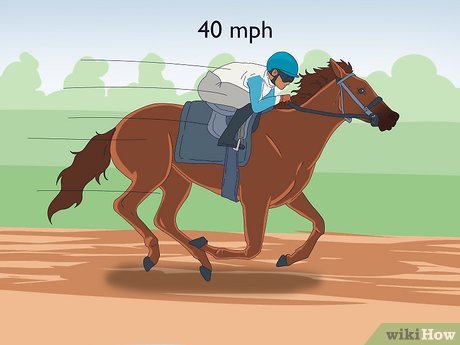
Notable competitions and winners
The equestrian world is filled with prestigious competitions that have produced remarkable winners. The Olympic Games, held every four years, showcase the talent and skills of the world’s top riders in disciplines such as dressage, show jumping, and eventing. Legends like Anky van Grunsven and Michael Jung have dominated their respective disciplines, consistently achieving remarkable success and setting new records.
The Connection between Horseback Riding and Horse Racing
Horse racing, a thrilling and competitive sport, shares a deep-rooted connection with horseback riding. The skills and techniques developed through horseback riding have paved the way for the development and success of horse racing.
Exploring the similarities between horseback riding and horse racing
Horse racing is often referred to as the “sport of kings” and traces its origins to ancient civilizations such as ancient Greece, Rome, and Babylon. The art of horseback riding provided the foundation for horse racing techniques, with skilled riders maneuvering horses to achieve speed and agility on the racetrack. Both horseback riding and horse racing rely on the partnership between rider or jockey and horse to achieve success.
Training for horse racing
Preparing a racehorse for competition involves rigorous training and conditioning. Jockeys work closely with trainers to develop a training program that builds stamina, strength, and speed. Conditioning exercises, such as galloping and interval training, aim to enhance the horse’s cardiovascular fitness and muscular endurance. Horseback riding skills, honed through years of practice, also contribute to a jockey’s ability to guide and control a racehorse effectively.
Jockeys and their role in horse racing
Jockeys are professional horseback riders entrusted with the responsibility of guiding and urging racehorses to victory. They must possess exceptional riding skills, tactical awareness, and a deep understanding of their horse’s abilities. Jockeys play a vital role in races, employing race-riding strategies, such as finding the best racing line, assessing the pace of the race, and timing their moves to maximize the horse’s chances of success.
The Thrill of Horse Racing
Horse racing carries a unique charm that captivates millions of spectators worldwide. The combination of powerful horses, skilled jockeys, and the thunderous sound of hooves creates an exhilarating and unforgettable experience for both participants and observers.
Popular horse racing events
Horse racing is celebrated through various prestigious events held around the world. The Kentucky Derby, known as the “Run for the Roses,” is one of the most iconic horse races in the United States. The Royal Ascot in the United Kingdom is renowned for its rich history, high fashion, and top-class racing. Other notable events include the Melbourne Cup in Australia, the Dubai World Cup in the United Arab Emirates, and the Prix de l’Arc de Triomphe in France.
Betting and wagering on horse races
Horse racing has long been associated with wagering and betting, adding an extra layer of excitement for spectators. Punters analyze factors such as a horse’s form, jockey’s performance, and track conditions to make informed betting decisions. Various types of bets can be placed, including win, place, show, exacta, trifecta, and more. Betting on races has become a popular pastime for many, with the potential to win substantial sums of money.
Experiencing a live horse race
Attending a live horse race is an unforgettable experience, immersing spectators in the energy and atmosphere of the event. The roar of the crowd, the anticipation before the race, and the breathtaking speed of the horses create a unique sense of adrenaline and excitement. Watching the horses thunder down the track, battling for victory, evokes a range of emotions and creates memories that last a lifetime.
Famous Racehorses in History
Throughout the history of horse racing, certain racehorses have left an enduring legacy, captivating fans with their exceptional speed, stamina, and determination. These equine athletes have become icons of the sport, etching their names into the annals of racing history.
Legendary racehorses and their records
Racehorses like Secretariat, often hailed as the greatest racehorse of all time, achieved legendary status through their extraordinary performances. Secretariat’s record-breaking 1973 Triple Crown victory, accompanied by his awe-inspiring speed and elegant stride, has become the stuff of legends. Other notable racehorses include Man o’ War, Sea-Bird, and Frankel, all beloved for their dominance on the track and unmatched records.
Iconic racehorses in popular culture
The fame and popularity of celebrated racehorses have transcended the world of horse racing, spilling into popular culture. Their names and achievements have been immortalized in books, documentaries, and films. For example, Seabiscuit, a thoroughbred racehorse during the Great Depression-era, achieved fame through his underdog story, which was later chronicled in a best-selling book and a Hollywood film.
Horse Racing Around the World
Horse racing is a global sport, cherished and celebrated in various nations. It has become an integral part of cultural traditions, bringing communities together and capturing the spirit of competition and camaraderie.
International horse racing traditions
Different countries have distinct horse racing traditions that reflect their unique cultures. In the United Kingdom, the sport is steeped in tradition, with events like the Grand National and Royal Ascot showcasing British thoroughbred racing at its finest. In the United States, the Triple Crown races, including the Kentucky Derby, the Preakness Stakes, and the Belmont Stakes, hold a special place in American racing history. Other countries such as Ireland, Australia, Japan, Dubai, and Hong Kong have also established themselves as prominent hubs for horse racing.
Notable racecourses around the world
Racecourses serve as the backdrop for thrilling horse racing events. Each course possesses its own distinct character and challenges, contributing to the excitement of the sport. Renowned racecourses include Churchill Downs in the United States, home to the Kentucky Derby, Ascot Racecourse in the United Kingdom, home of the Royal Ascot, and Flemington Racecourse in Australia, host of the Melbourne Cup.
Caring for Racehorses
Behind the glitz and glamour of horse racing, ensuring the well-being and welfare of racehorses is of paramount importance. Proper training, nutrition, and veterinary care play a crucial role in maintaining the physical and mental health of these graceful creatures.
Training and conditioning racehorses
Racehorses undergo rigorous training regimens designed to maximize their performance and enhance their fitness. Trainers carefully tailor exercise programs to develop the horse’s muscular strength, cardiovascular endurance, and speed. This includes regular workouts, galloping sessions, time trials, and simulated race practices. Training also involves educating the horse to respond to cues from the jockey and perform optimally in a competitive setting.
Diet and nutrition for racehorses
The nutritional needs of racehorses are carefully monitored to support their high energy requirements. Diets are typically composed of high-quality forages, grains, and supplements to provide the necessary balance of proteins, carbohydrates, fats, vitamins, and minerals. Feeding practices, such as frequent small meals and access to fresh water, contribute to a horse’s overall health and performance.
Injury prevention and veterinary care
Racehorses are prone to various injuries due to the high physical demands of racing. It is essential to implement preventive measures, such as regular veterinary check-ups, to detect any underlying issues and address them promptly. The use of cutting-edge diagnostic tools, therapeutic treatments, and rehabilitative practices ensures that racehorses receive the best possible care and support their overall well-being.
Conclusion
The connection between horseback riding and horse racing runs deep, with a shared history, techniques, and a passion for equestrianism. From the early origins of horseback riding to the exhilarating world of horse racing, these pursuits have inspired awe, sport, and cultural traditions across the globe. Whether you are a casual rider or a devoted race enthusiast, the bond between human and horse is a testament to the enduring beauty and grace of these majestic creatures. So, saddle up and embark on an incredible journey through the captivating worlds of horseback riding and horse racing.
